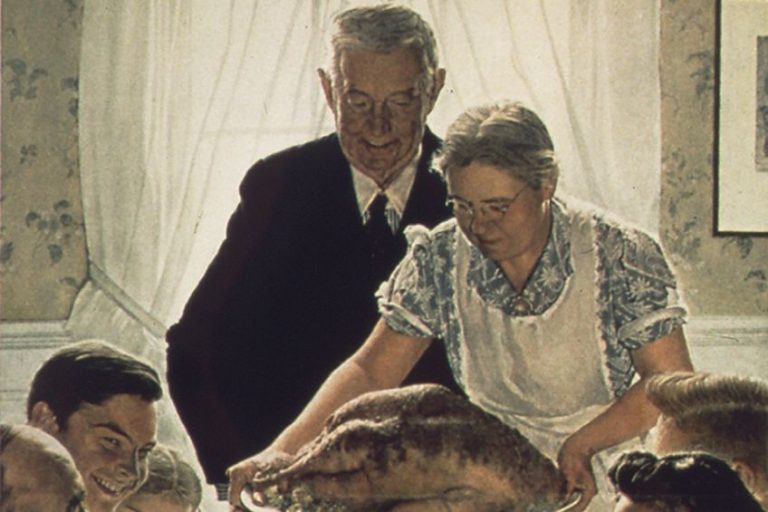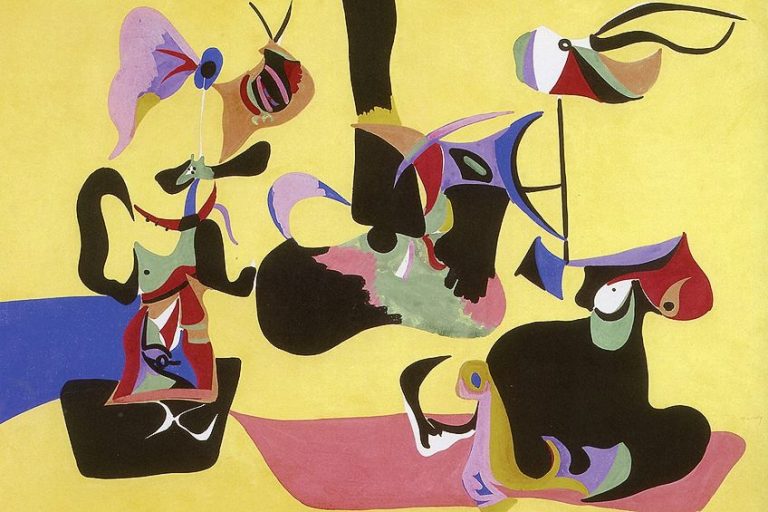Expressionist Artists – The 10 Most Famous Expressionists
Emerging after World War Two, the Expressionism movement began popping up in various cities around Germany in response to the atrocities that occurred. The art movement was viewed as an accurate reaction to the extensive and growing anxiety surrounding humanity’s increasingly harsh relationship with the world after the war. As an early 20th-century art form, Expressionism developed as a powerful mode of social criticism that was full of emotion. Below, we will be exploring some of the most important Expressionist artists of all time.
What Was Expressionistic Art?
Spanning about 15 years, from 1905 until 1920, the Expressionism movement developed primarily in Europe. Germany proved to be the predominant country of origin, as the majority of the most notable Expressionist artists were German. However, Austria and France were also some key regions where Expressionistic art developed, where various themes like the self, psyche, and sexuality were explored.
All expressionism artists, no matter their nationality, sought to express emotional experiences rather than physical reality.

As the name suggested, the term “expressionism” was used to denote paintings that displayed an incredibly personal and subjective account of what the artists were perceiving in the world around them following the end of the Second World War. Spurred on by the defiance towards bourgeois culture and a passionate search for refreshed creativity, Expressionism made use of overstated and heightened colors that adequately conveyed the intense emotions the artists were experiencing.
Expressionistic art was distinguished by wide brush strokes, vivid bursts of color, and extremely abstracted styles. The overall aim of the movement was for artists to express their feelings towards their new reality, as opposed to merely depicting their physical reality for what it was.
Due to this, the Expressionism movement proved to be difficult to accurately define, as it spanned across many different countries who all attached their own mediums, thoughts, and understanding to the art style.
German Expressionism
The most notable form of Expressionistic art that developed was German Expressionism. Originating in the early 20th century in Germany, hence the name, this art style was made up of two groups known as Die Brücke and Der Blaue Reiter. The artists who led and participated in each group went on to become known as iconic German Expressionist artists, with their iconic paintings still being spoken about today.
Die Brücke emerged in Dresden in 1905 as an unconventional collective of artists looking to express their distaste towards the bourgeois social order that ruled Germany.

Founding members included Karl Schmidt-Rottluff, Ernst Ludwig Kirchner, Fritz Bleyl, and Erich Heckel. Despite none of these artists receiving a formal art education, they created some of the most iconic paintings that belonged to the German Expressionism era. Their name, which translated to “the bridge”, described their eagerness to connect the past and present.
Der Blaue Reiter was founded by celebrated artists Wassily Kandinsky and Franz Marc in 1911 and was seen as a fundamental addition to the Expressionism movement.
Artists working in this group broke down boundaries between different forms of art so that an unrestrained freedom of expression was reached. The name of the group was taken from the recurring theme of a rider on horseback from Kandinsky’s paintings at the time, as well as his and Marc’s love for the color blue which they believed held spiritual characteristics.
Abstract Expressionism
Arising as a post-World War Two movement in the United States between the 1940s and 1950s, Abstract Expressionism existed as the American version of German Expressionism. As the first explicitly American art movement to achieve international fame, Abstract Expressionism turned New York City into the beating heart of the Western art world.
It essentially existed as a movement that borrowed ideas from the German movement as well as other European art styles like Futurism, Synthetic Cubism, and the Bauhaus.
Today, there is still major disagreement about which artists belong to this movement, as much overlap occurred in the early years of Abstract Expressionism. Painters who truly defined this unique aesthetic were considered to be the first generation of Abstract Expressionist artists. However, many artists who have seemingly been forgotten by history are finally being acknowledged for their important contributions to the Abstract Expressionism movement.

Our 10 Most Famous Expressionist Artists
As Expressionism proved to be an incredibly respected and admired movement in art history, many enigmatic artists appeared on the scene at the beginning of the 20th century. As the movement itself was so complex and vast, countless artists produced a variety of paintings under the idea of Expressionism as the term meant various things at different times. Due to this, Expressionism was able to accommodate a wide range of artists and their unique works.
While no list will ever be adequate, we will explore our top 10 most famous artists below.
Helene Schjerfbeck (1862 – 1946)
| Nationality | Finnish |
| Where the Artist Lived | Finland and Sweden |
| Associated Art Movements | Naturalism, Realism, and Expressionism |
| Most Famous Paintings | Girl Reading (1904) The Alarm (1935) Self Portrait (1942) |
One of the earliest female artists who experimented with Expressionistic art was Finnish painter Helene Schjerfbeck. While she was predominantly known for her incredible realist paintings that included self-portraits, still life’s, and landscapes, Schjerfbeck played around with the ideas of Expressionism towards the end of her career where she remained in a sanatorium. These artworks proved to be decidedly eerier, with some of her most well-known paintings including Girl Reading (1904), The Alarm (1935), and Self Portrait (1942).
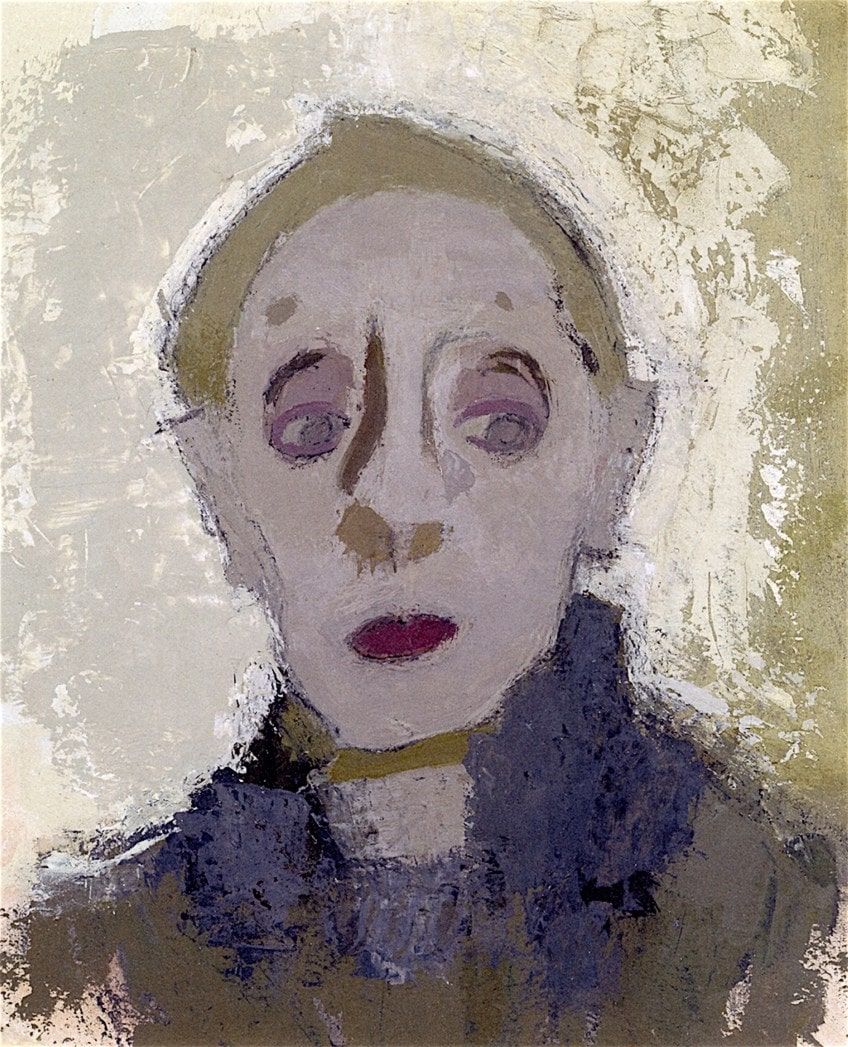
Schjerfbeck proved to be one of the few artists of her generation who was able to create utter masterpieces in a very naturalistic and impressionistic style, before switching it up to try out Expressionism. Her ability to create intense yet completely solitary moods in her paintings, which were most visible in her late self-portraits, proved both her terrific painting and portraiture skills.
An essential theme that was visible in most of her works was the fraught and agitated relationship she had with her models, whether they were human or mere scenery.
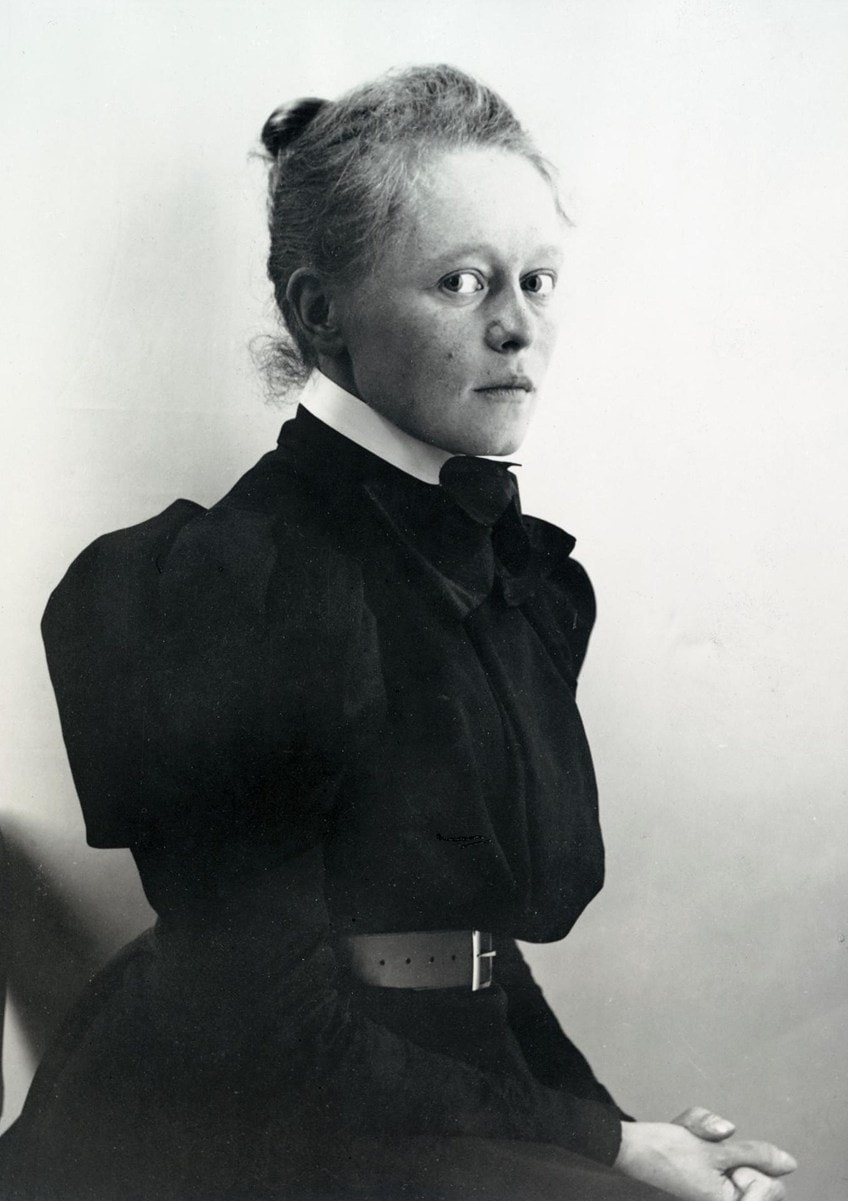
Known widely as Finland’s own Edvard Munch due to her treatment of themes relating to death, Schjerfbeck’s self-portraits proved to be her most spoken about. As they were mostly painted just before she died from cancer, she displayed an understanding that an individual was made up of everything they have ever been.
Simply put, Schjerfbeck was able to perceive hints of pure youthfulness within the old age she depicted in her self-portraits, which were thought to exist as phantoms that foreshadowed her death.
Edvard Munch (1863 – 1944)
| Nationality | Swedish Norwegian |
| Where the Artist Lived | Norway |
| Associated Art Movements | Symbolism and Expressionism |
| Most Famous Paintings | The Sick Child (1885 – 1886) The Scream (1893) Madonna (1894 – 1895) |
Norwegian painter and printmaker Edvard Munch was one of the most celebrated yet troubled artists in the art world. Regarded as a significant and influential artist of the modernism era, Munch was an important part of the Symbolist movement and worked to pioneer the development of expressionist painting. His most notable artwork ever made, which is considered to be one of the most well-known paintings in the world, is The Scream (1893). Other works include The Sick Child (1885 – 1886) and Madonna (1894 – 1895).
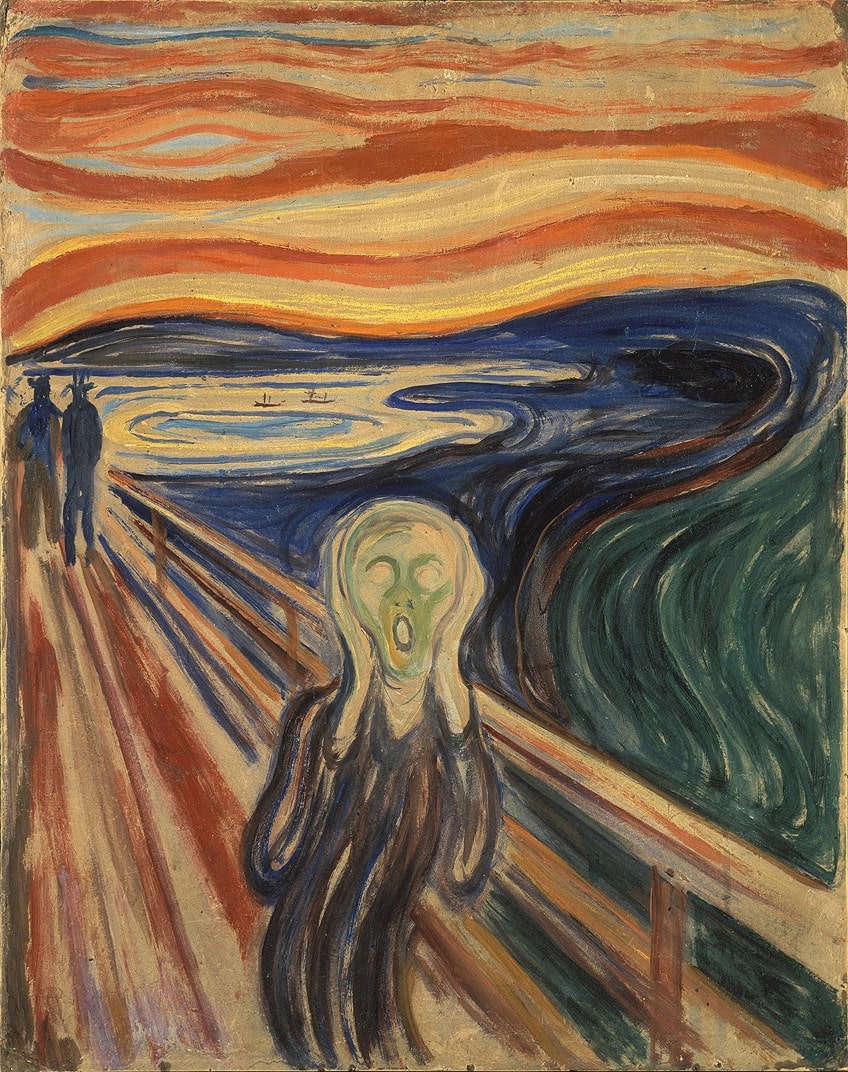
Munch was greatly influenced by the styles of Impressionism and Post-impressionism, as well as the art of Vincent van Gogh, Claude Monet, and Paul Gaugin. His incredibly lengthy career spanned nearly 60 years, with Munch focusing obsessively on themes relating to human integrity and virtue. Due to this, he explored the issues of persistent illness, sexual freedom, and religious aspiration in the numerous paintings he produced.
These obsessions were expressed by using vivid color, semi-abstraction, and ambiguous subject matters.
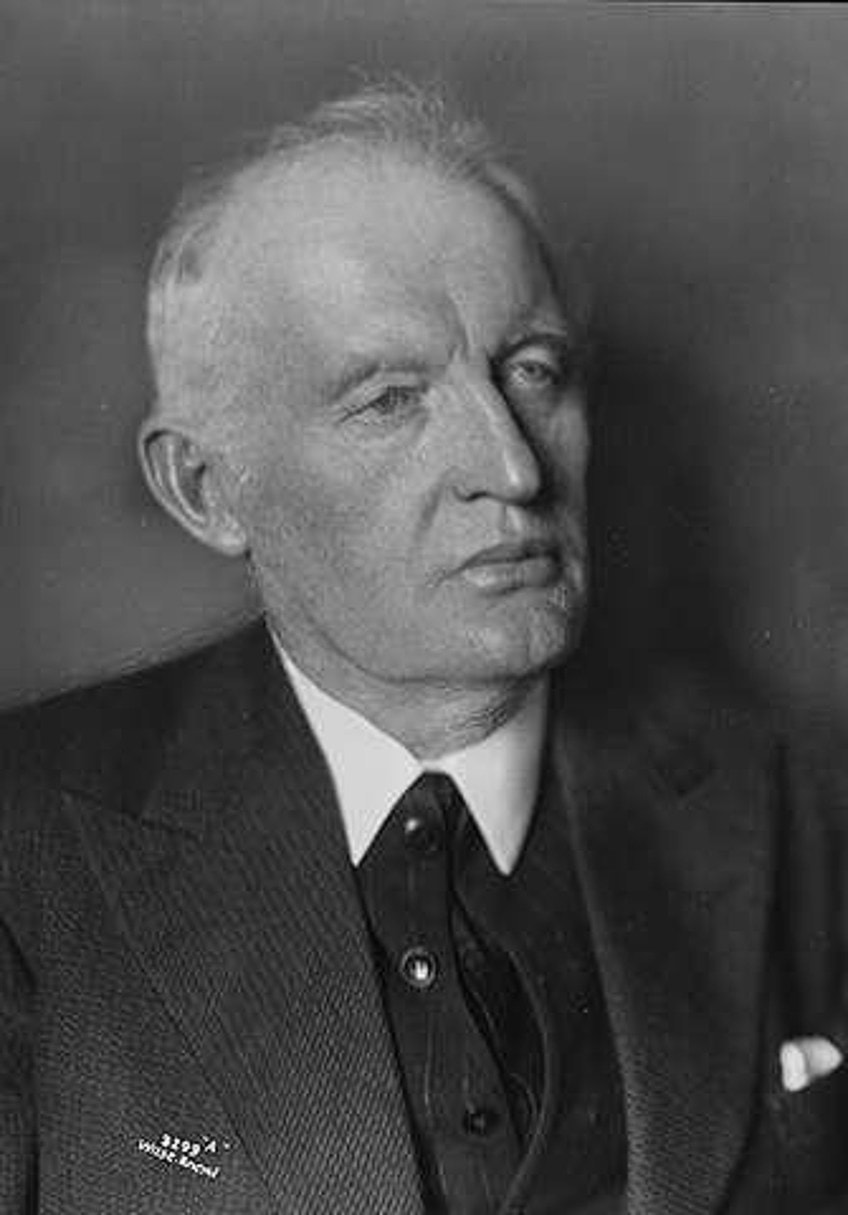
A major thread in Munch’s works was the open-ended themes that he used, which added to his work’s mysteriousness. This led to his paintings taking on the qualities of psychological charms, as his works were able to convey and comfort his and his viewers’ emotional and mental issues. The Scream is a great example of this, as it is known for its angst and anxiety, which stirs up similar emotions in viewers.
Munch suffered from a mental illness throughout his life, which clearly impacted his works through the emotional states he depicted.
Wassily Kandinsky (1866 – 1944)
| Nationality | Russian |
| Where the Artist Lived | Russia, Germany, and French |
| Associated Art Movements | Abstract art and Expressionism |
| Most Famous Paintings | Der Blaue Reiter (The Blue Rider) (1903) Composition IV (1911) On White II (1923) |
A pioneer in both Abstract art and Expressionism art was Russian artist Wassily Kandinsky, who found painting to be an extremely spiritual act. Originally practicing as a lawyer and an economist, Kandinsky only entered the art world in his early 30s where he began painting studies and sketching anatomy and life drawings. His contributions to the art world were said to help bridge the gap between Post-impressionism and Expressionism. His most notable works include Der Blaue Reiter (1903), Composition IV (1911), and On White II (1923).
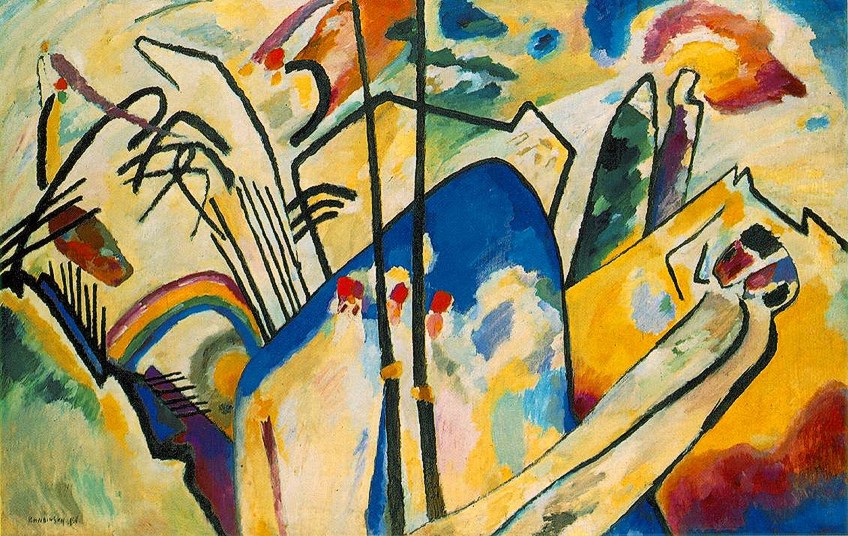
Kandinsky settled in Munich in the late 19th century, where he met and worked with some of the artists who would go on to become iconic in their movement. In 1911, Kandinsky founded the Der Blaue Reiter group with fellow artist Franz Marc, with this group going on to be one of the first official groups of Expressionists.
The Der Blaue Reiter group demonstrated Kandinsky’s shift from Impressionism to Expressionism, as he made use of heavy and thick paint, striking colors, and somewhat harsh brush strokes in his paintings.
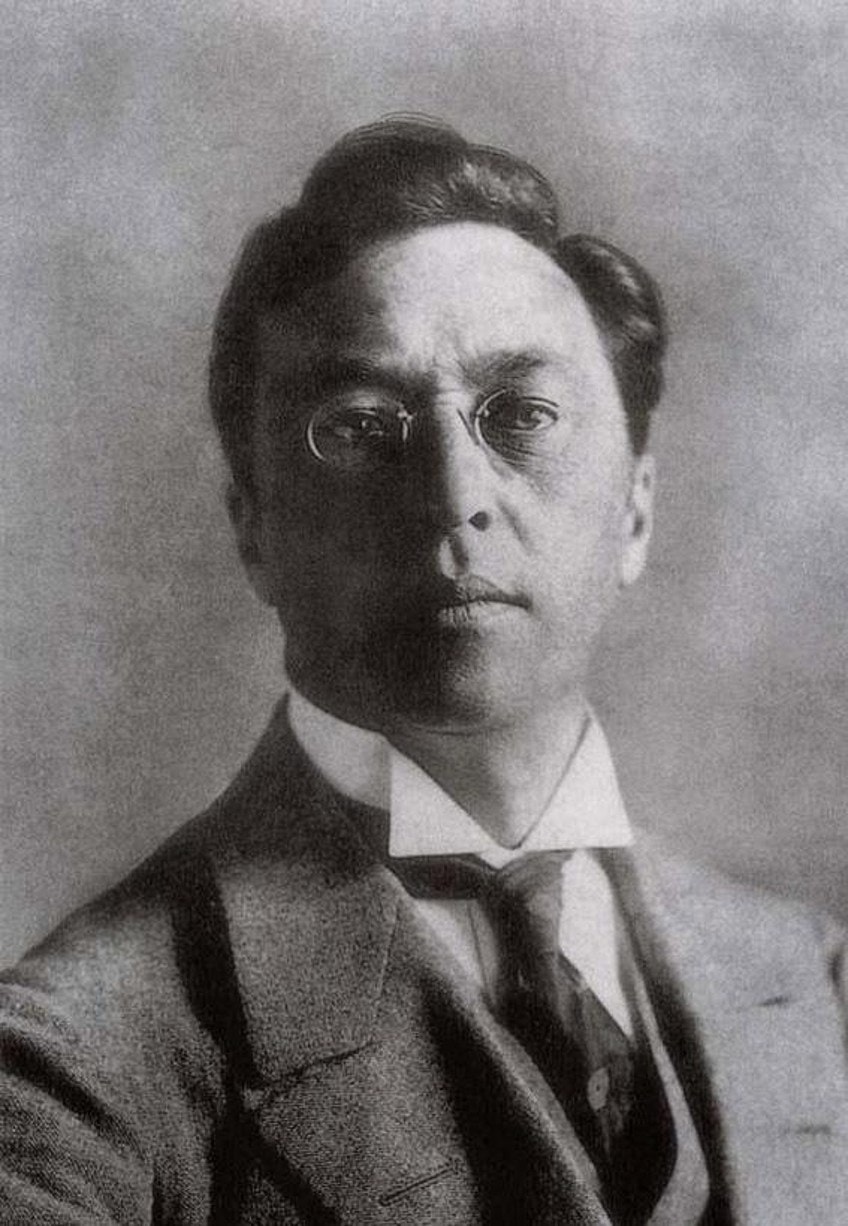
After the Nazis came to power just prior to World War Two, Kandinsky moved to France where he eventually became a citizen in 1939. It was here that he created some of his most notable and celebrated paintings ever. In his paintings, Kandinsky attempted to convey intense spirituality and human emotion through an all-inclusive visual language that was made up of abstracted forms and bold colors.
This led to his works becoming incredibly dreamlike, which was further emphasized by his deeply intricate and evocative portrayals.
Franz Marc (1880 – 1916)
| Nationality | German |
| Where the Artist Lived | Germany and France |
| Associated Art Movements | Expressionism |
| Most Famous Paintings | Blue Horses (1911) The Tower of Blue Horses (1913) Fate of the Animals (1913) |
Another artist on the list of important Expressionist painters that were part of the Der Blaue Reiter group was German painter and printmaker Franz Marc. As the other founder of the group, along with Wassily Kandinsky, Marc played a crucial role in the overall development and emergence of the Expressionistic art movement. His mature works are mostly known for their bright colors and portrayals of animals. Some of his well-known works include Blue Horses (1911), The Tower of Blue Horses (1913), and Fate of the Animals (1913).
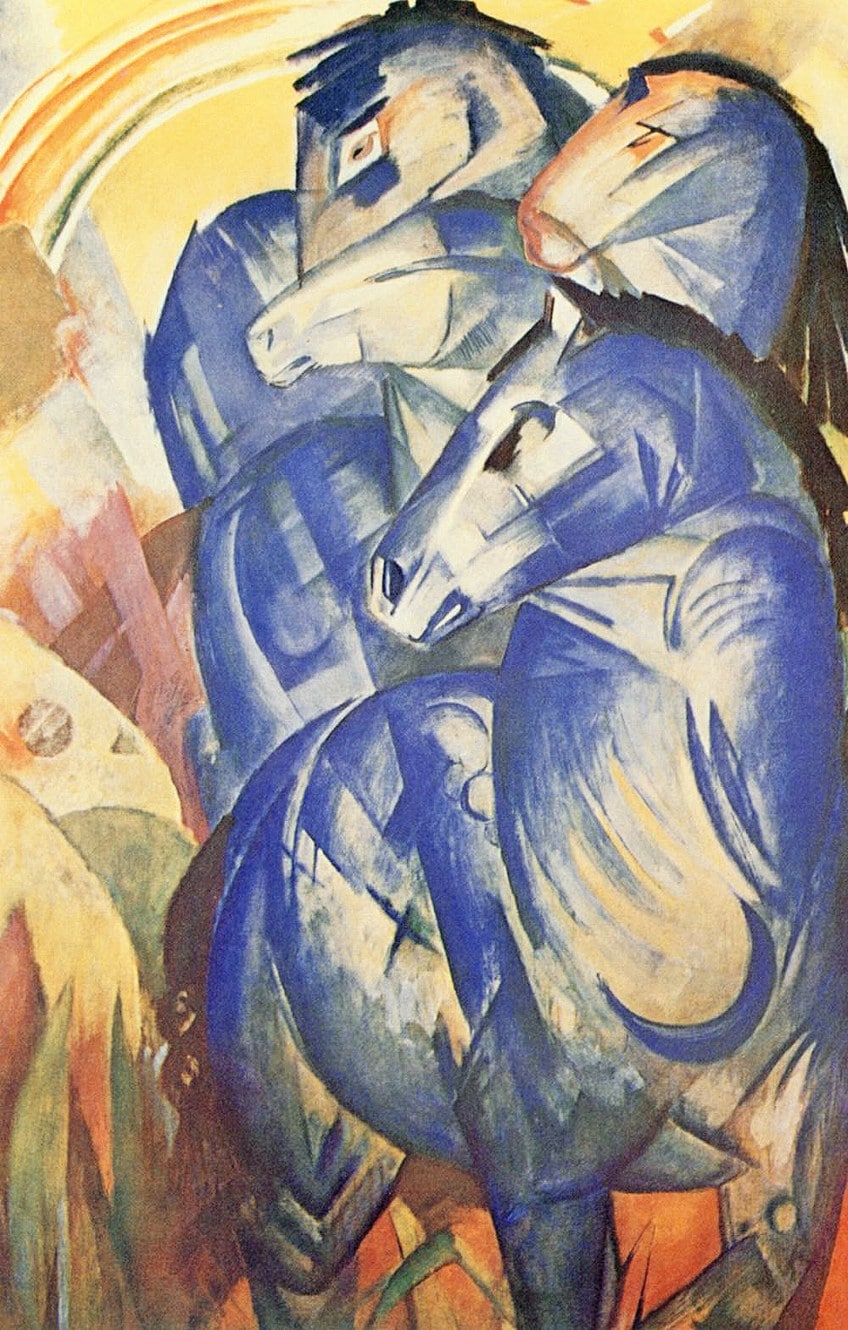
Marc’s paintings embodied the elevated anxiety that was felt in early 20th century Europe, as people struggled to come to terms with the rapidly changing urban world that was on the brink of war. The majority of his paintings featured animals, more specifically horses, which led to his works being seen as “degenerate” by the Nazis.
Despite almost all of his works being painted during World War Two, most of them survived the war and are exhibited all over the world today.
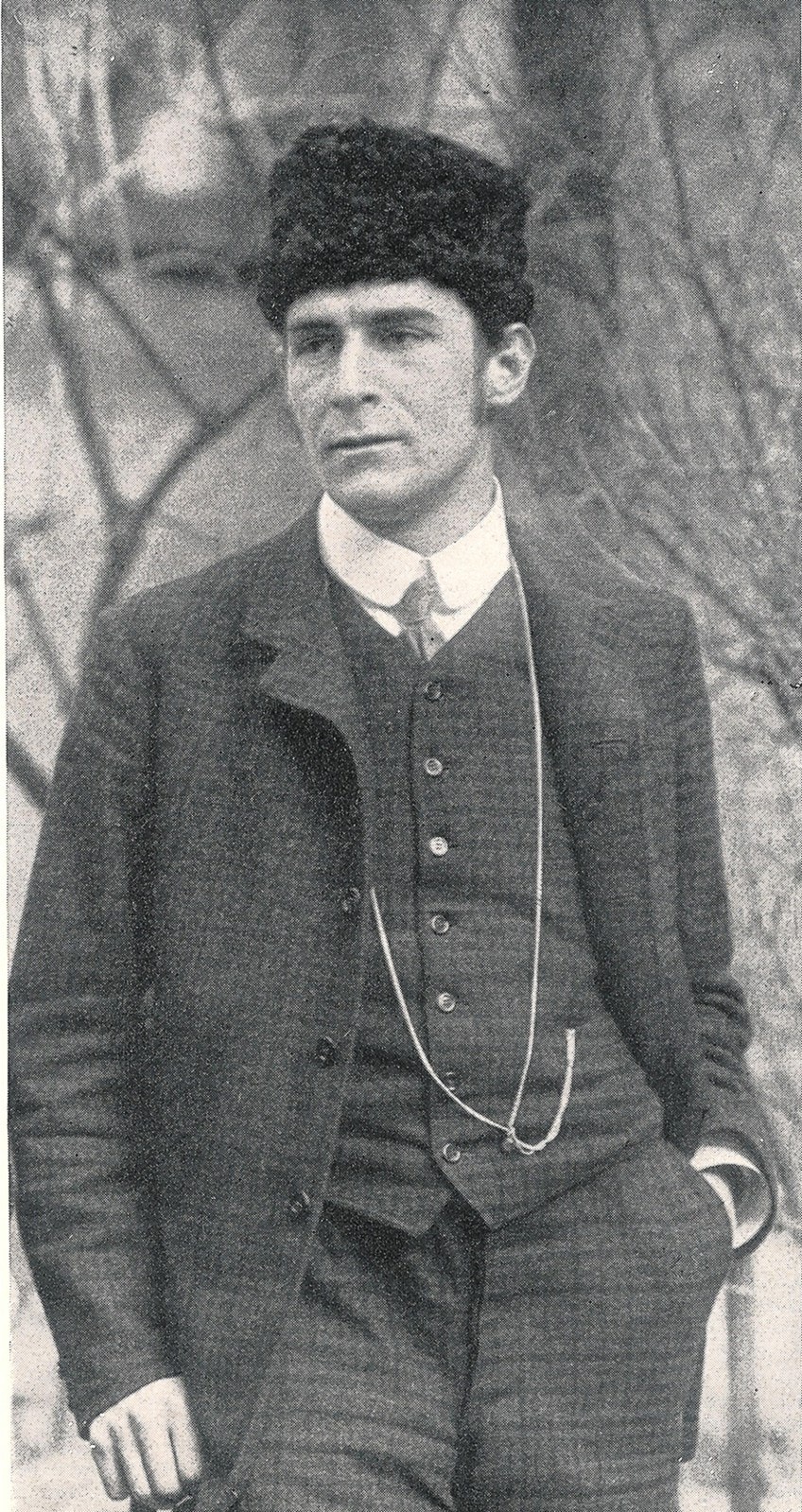
When looking at his artworks, Marc was most famous for his brightly colored paintings of horses that he used to convey abstract yet serious messages about mankind, the natural world, and the destiny of humanity. He gave colors deep emotional and psychological meanings, with blue being used to depict masculinity and spirituality. Sadly, Marc died in World War One during the Battle of Verdun at only 36 years old.
When looking at his paintings, it was thought that he foreshadowed the downward spiral of both Europe and his own life.
Ernst Ludwig Kirchner (1880 – 1938)
| Nationality | German |
| Where the Artist Lived | Germany and Switzerland |
| Associated Art Movements | Expressionism |
| Most Famous Paintings | Street, Berlin (1913) Self-Portrait as a Soldier (1915) Davoser Café (1928) |
An important founding member of the Expressionism movement was German painter Ernst Ludwig Kirchner, who was a major driving force within the Die Brücke group. Due to his involvement with these Expressionists, Kirchner has gone on to be seen as one of the most gifted and significant of all the German artists. His most celebrated paintings include Street, Berlin (1913), Self-Portrait as a Soldier (1915), and Davoser Café (1928).

Kirchner’s paintings were incredibly dreamlike due to the colors used and the characters portrayed, as he always painted his subjects in a world of misery and bewilderment. He was inspired by the same anxieties that preoccupied the Expressionism movement as a whole, demonstrating apprehensions about mankind’s place in the modern world as well as missing feelings of spirituality and authenticity.
This led him to characterize his works with vibrant blocks of pure color, broad and conflicting brushstrokes, as well as pointed and angular forms.

During the Second World War, the Nazis classified his work as “degenerate” along with many other artists, with over 600 of his paintings being broken or sold. This led to an ever-increasing fear developing in his personal life, which later turned into depression.
The sense of confusion he felt in his own life could clearly be seen in his chaotic pieces, and this was carried through the inner turmoil he was experiencing.
In 1938, while living in Switzerland, Kirchner died by suicide when he was just 58. However, some reports still doubt it to be suicide.
Karl Schmidt-Rottluff (1884 – 1976)
| Nationality | German |
| Where the Artist Lived | Germany |
| Associated Art Movements | Expressionism |
| Most Famous Paintings | Houses at Night (1912) Woman with a Bag (1915) A Group of Artists (1926-1927) |
Many notable Expressionists came from Germany, with artist Karl Schmidt-Rottluff being no exception. As one of the founders of the Die Brücke group, Schmidt-Rottluff shared a desire with his colleagues to dismiss the confining social rules of the time, as well as the conventional aesthetic customs and academic training that was taught in art schools. Some of his celebrated paintings are Houses at Night (1912), Woman with a Bag (1915), and A Group of Artists (1926-1927).
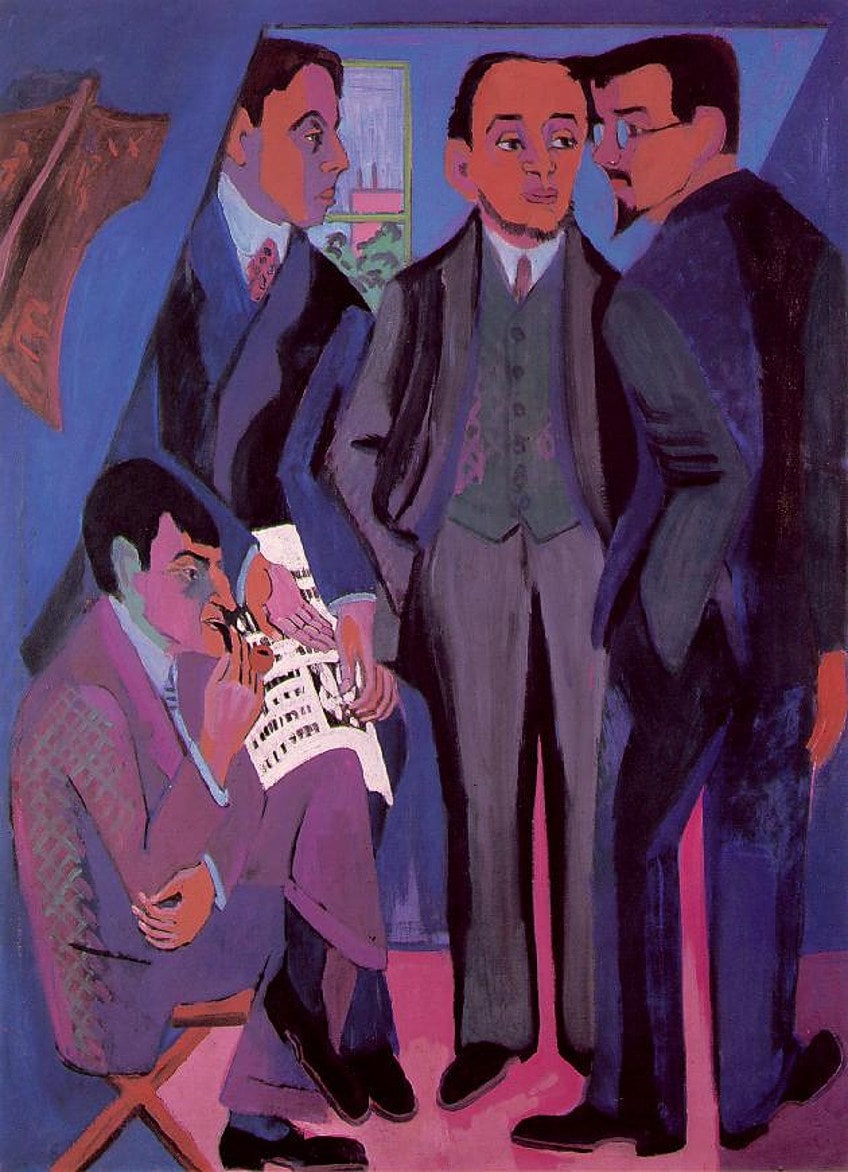
After helping to establish the group, Schmidt-Rottluff relocated to Berlin, where he continued to paint in the style of Die Brücke despite the movement disbanding shortly after his move. The avant-garde ideals that he developed within this group stayed with him throughout his career, which can be seen in the paintings he produced. Despite serving in the First World War on the Eastern Front from 1915 until 1918, this experience never heavily influenced his paintings.
After the war, his career picked up and he began to enjoy substantial success.
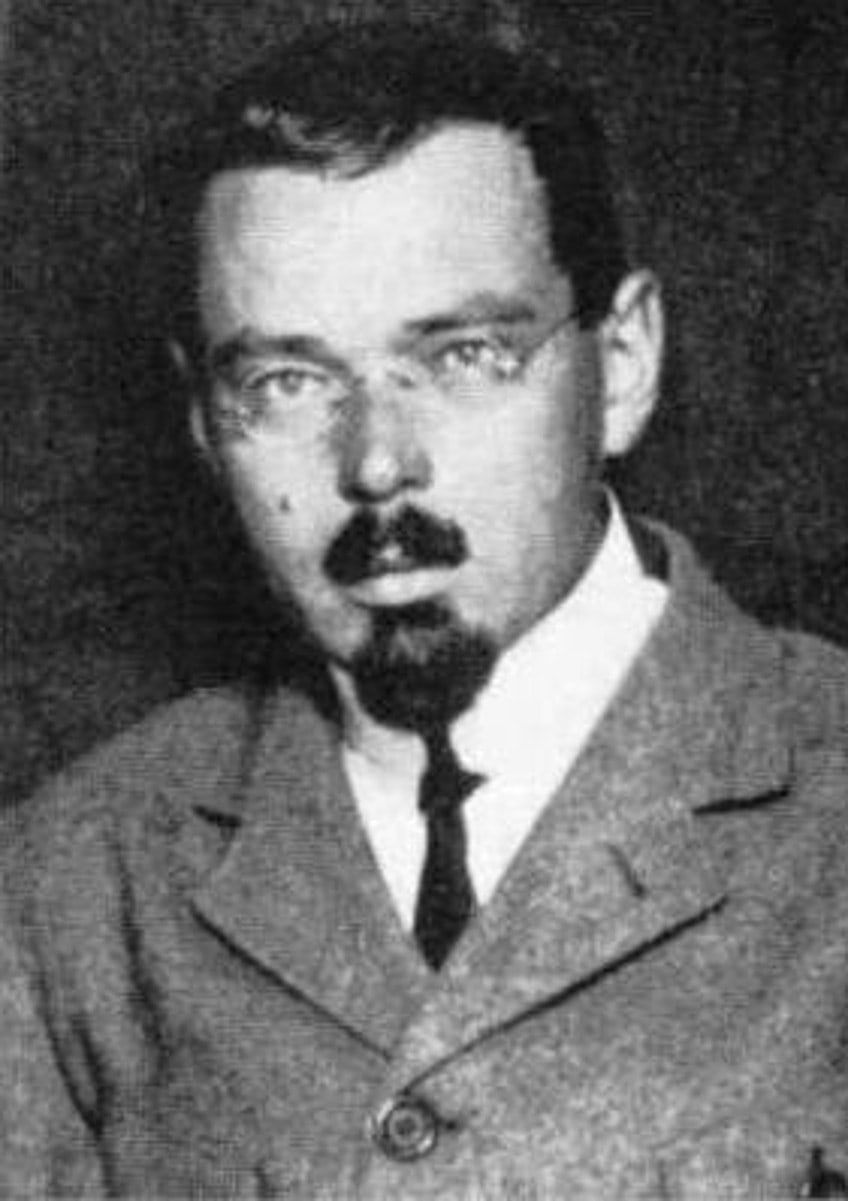
Like his fellow German Expressionism artists, Schmidt-Rottluff’s paintings were marked as “degenerate” by the Nazis in the build-up to World War Two. His works were seized from museums, which prompted him to help establish a museum in Berlin that was specifically dedicated to the work of Die Brücke artists after the war ended.
Having initially studied architecture before turning to art, Schmidt-Rottluff continued to show an interest in the three-dimensional form, which can be seen through the angular and cubic forms he painted.
Egon Schiele (1890 – 1918)
| Nationality | Austrian |
| Where the Artist Lived | Austria |
| Associated Art Movements | Expressionism |
| Most Famous Paintings | Self-Portrait with Physalis (1912) Woman in Black Stockings (1914) Sitting Woman with legs Drawn Up (1917) |
Austrian painter Egon Schiele finds himself on the list of notable Expressionist painters due to his signature graphic style that is instantly recognizable. As a protégé of the iconic Gustav Klimt, Schiele was a prominent figurative painting at the start of the 20th century. Despite a short life and career, Schiele is remembered for his important contributions to Expressionistic art. Some of his well-known paintings include Self-Portrait with Physalis (1912), Woman With Black Stockings (1914), and Sitting Woman with legs Drawn Up (1917).
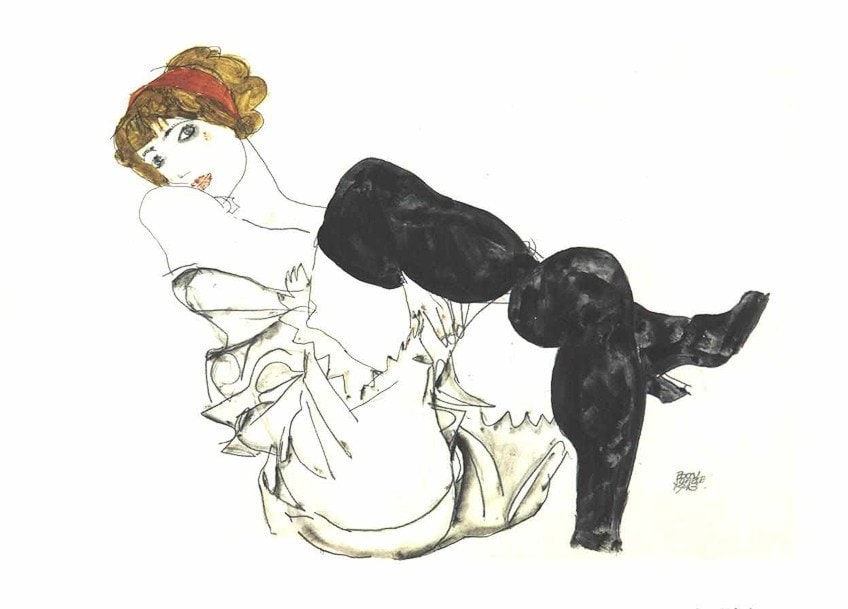
When considering Schiele’s paintings, the intense figural distortion and twisted body shapes emerged as his most prominent features. This demonstrated his daring resistance towards traditional forms and standards of beauty, as Schiele worked to contort his figures as much as possible so that their presence became more expressive and meaningful.
His many portraits and self-portraits are noted for their intensity and unrefined sensuality, as Schiele was able to create intense explorations of both his and his model’s souls and sexuality.
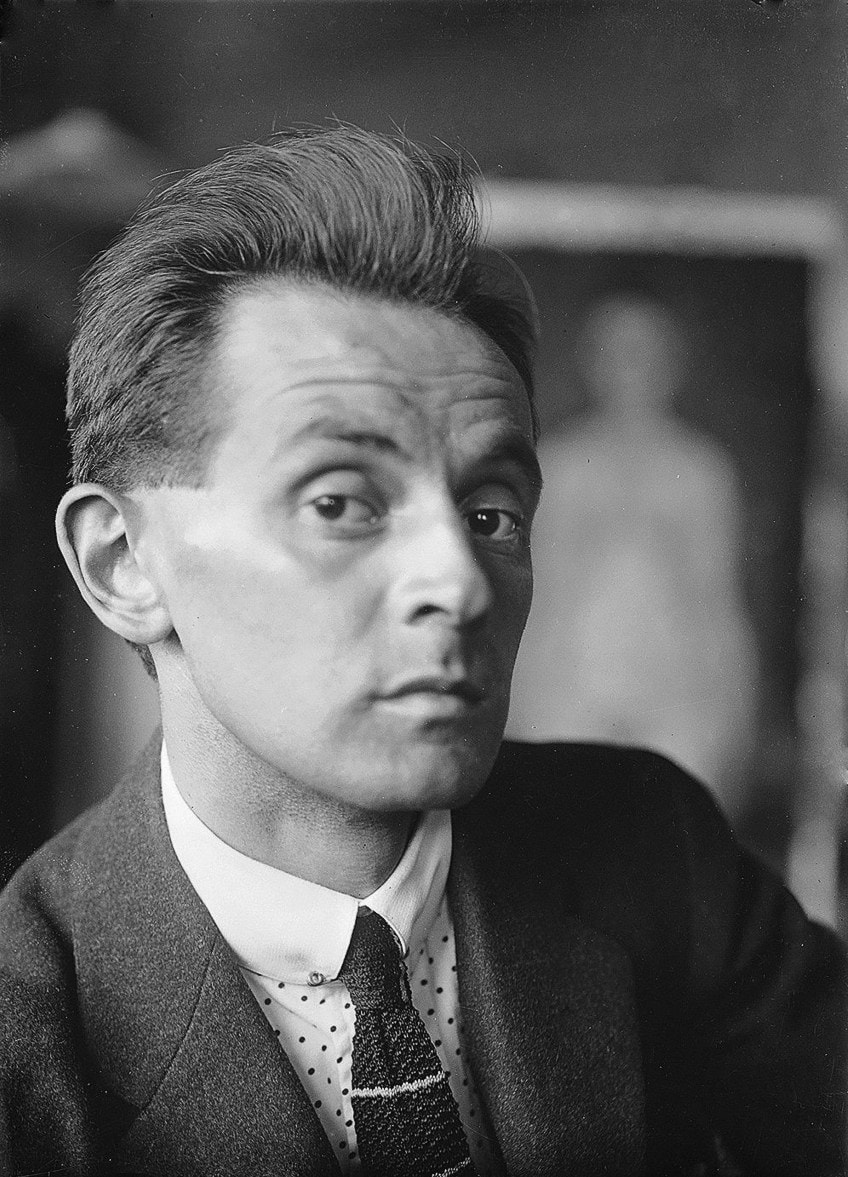
Despite dying at 28 years old from the Spanish flu, Schiele carved out a very prolific albeit short career for himself. He remains famous not only for his psychologically and erotically loaded paintings but also for his fascinating life. He lived a notoriously lascivious lifestyle, which was marked by scandal and infamy. Schiele also died a mere three days after the death of his pregnant wife.
While his lifestyle may be questionable, Schiele’s untimely death was a shame as he was on the brink of the lucrative success that evaded his career previously.
Janet Sobel (1893 – 1968)
| Nationality | Ukrainian American |
| Where the Artist Lived | Ukraine and America |
| Associated Art Movements | Abstract Expressionism |
| Most Famous Paintings | The Burning Bush (1944) Milky Way (1945) Untitled (1946) |
One of the most famous Abstract Expressionistists to come from the movement was Ukrainian American painter Janet Sobel. Only starting her career at the age of 45, Sobel was the very first artist to ever make use of the infamous drip technique that went on to influence the great Jackson Pollock, as well as prolific art critic Clement Greenberg. While she was unfortunately ignored during her career, Sobel created pieces that are revered today. Some of them include The Burning Bush (1944), Milky Way (1945), and Untitled (1946).
Born in Ukraine but moving to America at the age of 15, Sobel went on to marry her husband when she was just 16. After having children, Sobel dedicated her life to raising her kids and only began to experiment with art in 1937. She initially began her art career with painting abstractions and mainly figurative works, until her son recognized her pure talent and helped further her artistic progress.
By this time, Sobel’s works were being shared with Surrealist artists Max Ernst and André Breton, who realized her true talent.
Upon viewing her first exhibition, Greenberg credited Sobel with displaying the first type of “all-over paintings” that had ever been seen. After she emerged as an artist, Sobel further developed the iconic drip technique that would go on to cement Pollock as a notable Abstract Expressionist.
Despite the enormous contribution that her paintings made to the Abstract Expressionist movement, Sobel was largely overlooked during her career, as society disregarded women as capable of producing quality artworks at the time.
Clyfford Still (1904 – 1980)
| Nationality | American |
| Where the Artist Lived | America |
| Associated Art Movements | Abstract Expressionism and Color Field painting |
| Most Famous Paintings | 1948-C (1948) 1957-D-No. 1 (1957) Untitled (1974) |
An Abstract Expressionist who was virtually unknown when compared to his fellow New York artists was American painter Clyfford Still. However, he was widely considered to be the most talented member to emerge from the Abstract Expressionist movement despite receiving limited attention. Still was also known for his stubborn and uncompromising attitude, which made others reluctant to work with him or exhibit his art. Some of his greatest paintings include 1948-C (1948), 1957-D-No. 1 (1957), and Untitled (1974).
Still is credited with being one of the first artists to break through to a new and fundamentally abstract style of art that was completely lacking in any apparent subject matter. In his later career, Still focused on applying huge expanses of pure color onto his canvases, which worked to arouse the striking clashes between man and nature that were occurring on an enormous scale.
He described his paintings as the consequence of life and death blending in dreadful unions, which he emphasized through adding his own thoughts to the work.
As a firm supporter of the moral value of art in a confusing and modernizing world, Still’s paintings went on to influence the second generation of Color Field painters. The central theme that can be seen in all his works is the existential battle of the human spirit against forces of nature. Despite lacking identity in the art world, Still’s refusal to diminish the value of his works through participating in “lower grade” exhibitions caused his reputation to falter further.
Shunning most of the art world, it is a miracle that his art thrived at all.
Jackson Pollock (1912 – 1956)
| Nationality | American |
| Where the Artist Lived | America |
| Associated Art Movements | Abstract Expressionism |
| Most Famous Paintings | Number 17A (1948) Autumn Rhythm: Number 30 (1950) Convergence (1952) |
Possibly one of the most notable artists of the movement to ever exist was American painter Jackson Pollock, who is widely viewed as the poster boy for the entire movement. Celebrated for his infamous drip paintings after being inspired by the works of Janet Sobel, Pollock worked to develop his style of dripping, pouring, and splattering paint in seemingly random ways onto his canvases. While the majority of his paintings are well-known, Number 17A (1948), Autumn Rhythm: Number 30 (1950), and Convergence (1952) are very respected.

Pollock’s contentious art style became the topic of many debates, with critics wondering if his drip paintings could even be seen as art. While his techniques included slinging paint with sticks and other objects to create turbulent vortices of color and line, an article proposed the label of “greatest living painter in the United States” in reference to Pollock in 1949.
The painting style he developed meant that he rarely made any direct contact with his canvases, as he used his body in an uninhibited way to produce whatever he felt in the moment.
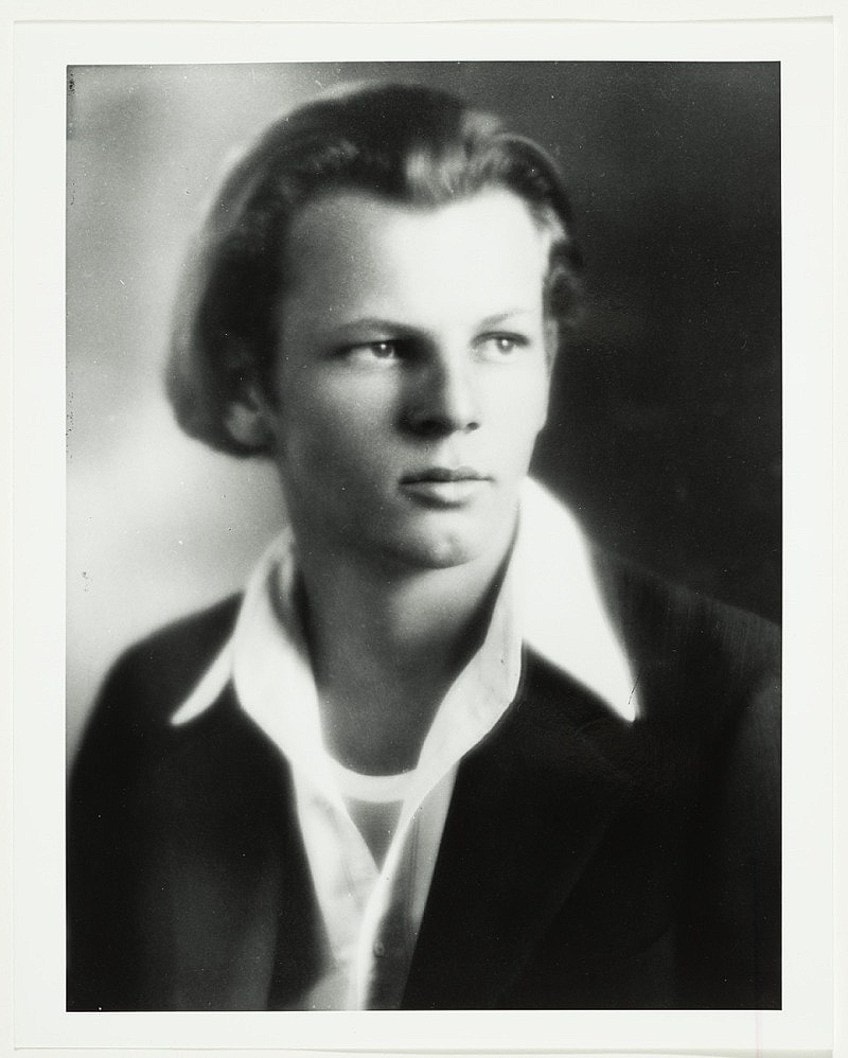
To this day, his collection of drip paintings is seen as one of the most original bodies of work of the century. Pollock’s tough upbringing in the American West was said to have shaped him into the aggressively confident and assertive person he became, with his identity slowly transforming around his growing alcoholism. This led to his death in 1956, as he died in a single-car accident while driving under the influence. Pollock’s great significance was owed to his development of one of the most extreme abstract styles in the history of modern art.
Expressionistic art existed as one of the most influential and meaningful movements in the era of modern art. From Expressionism developed both German Expressionism and Abstract Expressionism, with these two movements proving to be powerful styles of creation. Due to the style evolving over a few decades, many famous artists emerged to create notable paintings. If you have enjoyed learning about the above artists, we encourage you to read up on the many others that also existed and meaningfully contributed to the movement.
Frequently Asked Questions
Did the Expressionism Movement Only Include Paintings?
As an art movement that emerged at the beginning of the 20th century, Expressionism was not limited to only paintings. While the majority of its most iconic works happen to be paintings, the styles of the Expressionism movement also lent themselves to literature, music, theatre, and architecture in addition to visual arts. The overall aim of Expressionism artists, irrespective of their line of work, was to express an emotional experience as opposed to physical reality.
What Themes Did Expressionistic Art Tend to Explore?
Expressionist painters explored a variety of themes that were closely linked to emotional and spiritual experiences. Due to this, the most common subjects that were addressed in Expressionistic art were topics relating to oneself, the mind and body, sensuality, nature, spirit, emotions, magnification, and the misrepresentation of reality.
Who Are Other Notable Expressionist Artists?
As the Expressionism movement was so broad, many other artists participated in the movement that we have not mentioned above. Other Expressionist painters who were also celebrated for their paintings include Oskar Kokoschka, Emil Nolde, Paul Klee, Max Beckmann, Paul Gauguin, Erich Heckel, Otto Dix, and Käthe Kollwitz. Artists who experimented with Expressionism but were labeled as mainly Post-Impressionists and Fauvists were Vincent van Gogh and Henri Matisse. Pablo Picasso and George Grosz are also notable artists in the expressionist style.
Isabella studied at the University of Cape Town in South Africa and graduated with a Bachelor of Arts majoring in English Literature & Language and Psychology. Throughout her undergraduate years, she took Art History as an additional subject and absolutely loved it. Building on from her art history knowledge that began in high school, art has always been a particular area of fascination for her. From learning about artworks previously unknown to her, or sharpening her existing understanding of specific works, the ability to continue learning within this interesting sphere excites her greatly.
Her focal points of interest in art history encompass profiling specific artists and art movements, as it is these areas where she is able to really dig deep into the rich narrative of the art world. Additionally, she particularly enjoys exploring the different artistic styles of the 20th century, as well as the important impact that female artists have had on the development of art history.
Learn more about Isabella Meyer and the Art in Context Team.
Cite this Article
Isabella, Meyer, “Expressionist Artists – The 10 Most Famous Expressionists.” Art in Context. November 22, 2021. URL: https://artincontext.org/expressionist-artists/
Meyer, I. (2021, 22 November). Expressionist Artists – The 10 Most Famous Expressionists. Art in Context. https://artincontext.org/expressionist-artists/
Meyer, Isabella. “Expressionist Artists – The 10 Most Famous Expressionists.” Art in Context, November 22, 2021. https://artincontext.org/expressionist-artists/.





